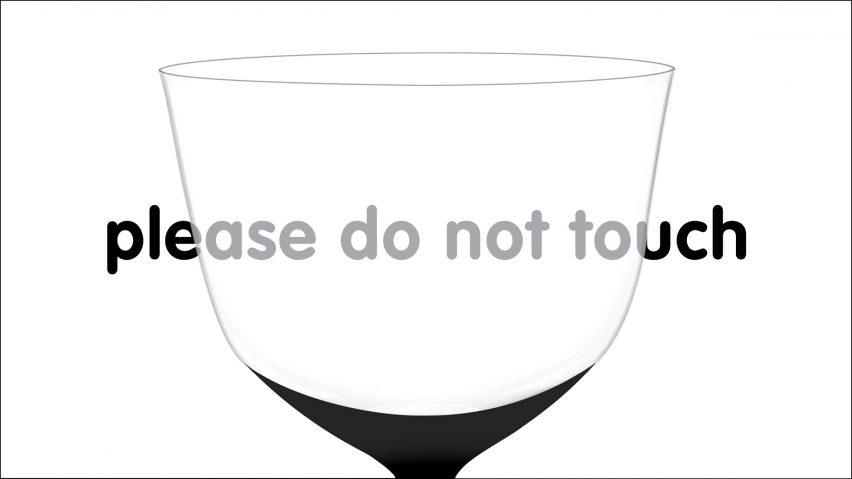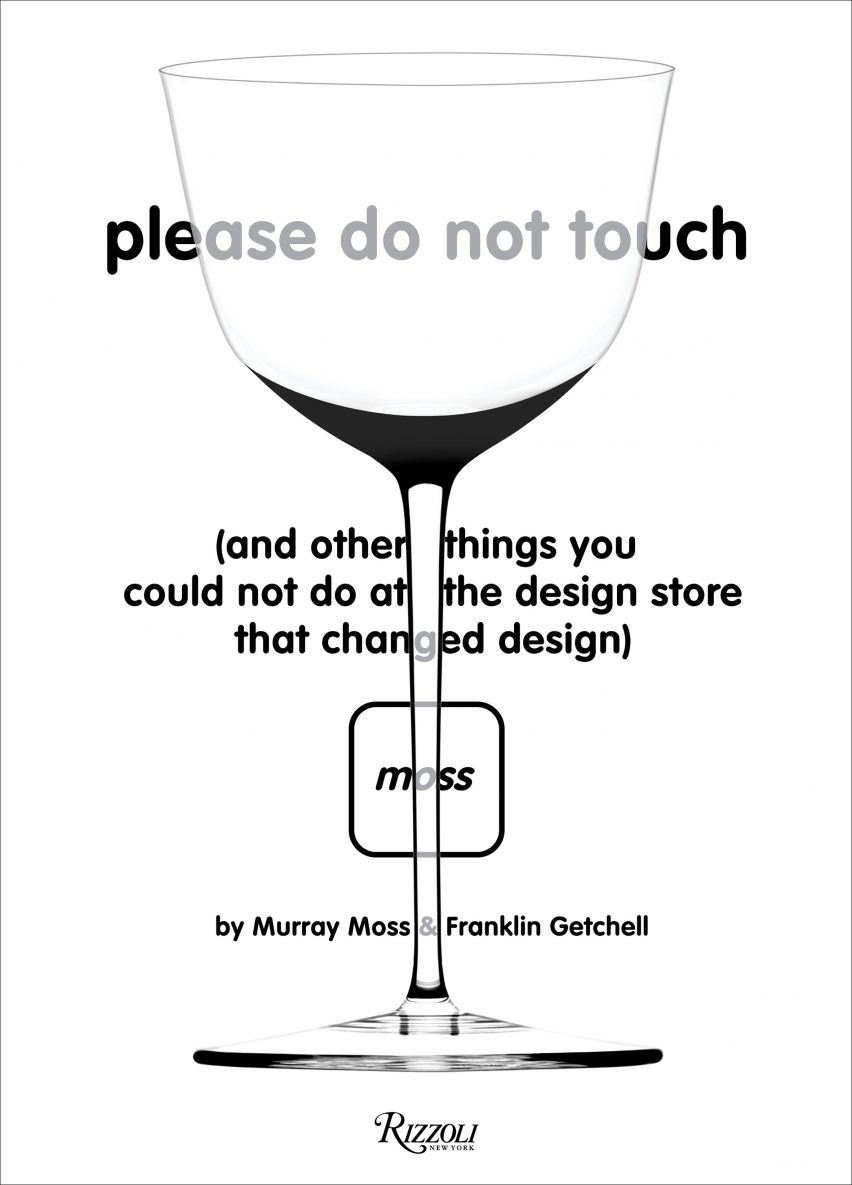
"Please Do Not Touch makes you realise how theatrical modernism truly was and still is"
A new book that traces the rise and fall of New York design store Moss, written by its former owners, has made Aaron Betsky nostalgic for the "theatre" of retail they created.
At the turn of the millennium, the true "mecca of modernism" was not the Museum of Modern Art, but Moss. A store selling designed objects curated – as we would now say – by the eponymous Murray Moss with his partner, Franklin Getchell, Moss offered a window onto a world where every form and surface was perfect.
It was such a crystal-clear view at least in part because Murray Moss cleaned every window and display case obsessively (he won a special award from Windex as a super user). But it was also because the impishly elegant store owner would tell you just how ideal each object was, while distracting you with stories about either its designer or the billionaire in the corner shopping the cases. Moss made modernism fabulous.
Now Moss and Getchell have documented their time at the store, which lasted between 1994 and 2012, in an equally fab book, Please Do Not Touch, published by Rizzoli and arriving on your coffee table with, of course, a white cover. The title was also the store's proud logo, written on T-shirts that were about the cheapest things you could buy there.
Beauty, Moss felt, was meant to be seen and admired, but not touched, and that extended to the Go Go Boys he hired to prance around in the showers showcasing the work of the Dutch design collective Droog during an opening of a show of their bathroom fixtures. Even if you had enough money to liberate one of the objects for sale from their cases, I think Murray Moss would prefer you to only have your staff touch it while cleaning the object of desire.
Moss made modernism fabulous
Written as a double memoir by the two owners, Please Do Not Touch chronicles, in alternating chapters, the two principals' lives from childhood (rural Vermont for Getchell, suburban Chicago for Moss), to their careers in theatre, where they met, their wanderings into film and television (Getchell at one point produced Sesame Street) and fashion (Moss co-owned a fashion line), and their convergence at the store on Greene Street.
Neither of them had a formal background in design, but they had exquisite taste and, what was just as important, understood that retail was a form of theatre. Every morning before the store opened, Moss would inspect the displays and make sure every surface was clean, before opening the door and beginning the process of wooing, charming, explaining, and perhaps convincing you to buy the objects.
If he succeeded and even a cup and saucer had to be removed from its cradle in a display case, he would have to set the stage anew, making sure all the items continued to play their part in this performance of modernism.
The store was a smash, drawing standing-room-only crowds that even spilled out into the street. I attended openings there on two occasions where police had cordoned off the whole block to give room to those pressing to enter. The rich and the famous came by, as did curators such as myself, and the magazines listed the store as the go-to place for design. For a while, Moss' white boxes where the aficionado's answer to Tiffany's robin's egg blue versions.
They understood that retail was a form of theatre
Ironically, Moss' impact was largest not just when he rode the crest of modernism's revival after the colourful and confusing period of postmodernism, but when he jumped off the utopia express to embrace what seemed to be its opposite.
In 1998, he visited the Nymphenburg factory in Munich. Here craftspeople had been making the same porcelain figures of birds and beasts, figures from popular theatere, and Italian actors, for centuries. Complex in their forms, decorated to within an inch of their ceramic lives, and above all else the epitome of figural and expressive design, these statuettes would seem like the denial of everything Moss had been selling in object and idea.
Yet there they were when he returned, displayed next to the Italian silverware and white bowls, and there was Murray Moss, explaining the craft, the many stories the figures told, and why appreciating their intricacy was the ultimate act of modernism. It was almost Hegelian: out of the clash between modernism and postmodernism came its reaction, its lifting above, which was the past transformed into an emblem of your enlightenment. By accepting Nymphenburg's beauty, you became a true connoisseur, a master in taste.
Truth was, Moss had always had a soft spot for expressive artists such as Gaetano Pesce, whose multi-coloured, dripping plastic furniture was a mainstay of the store. The contemporary designers he appreciated most were not the most disciplined abstractionists, but such explorers as Gio Ponti and Hella Jongerius – later the design director at Vitra – who were able to use both new and old forms, techniques, and materials in combination to create something that was new. Jongerius' vases, composites of Delft blue and rubber, became the icons of what Moss espoused.
It was this embrace of a modernism of collage, reuse, and appropriation that Moss was responsible – more than any single other person in the United States – for bringing to the forefront of our attention. Having made modernism chic again, Moss now made us flip and reverse ourselves, discovering a much wider field of possibilities the mix-up of new and old could open up.
Beauty, Moss felt, was meant to be seen and admired, but not touched
It couldn't last. In the naughts, Moss and Getchell made the mistake of growing too big too fast. They kept expanding their store, adding a wine bar and other ancillary activities. They also opened a store in Las Vegas and one in Los Angeles.
They did this right before the Great Recession hit and, after hanging on for four years, burdened by tax liabilities, but also by a changed reality, they closed their store to concentrate on consulting projects. Today, you have to go to a place like the shop at the Jewish Museum to get a sense of how they remain retail impresarios par excellence.

The story of Please Do Not Touch is one of hubris and fall, but also one of discovery and delight, as you watch Moss and Getchell fall in love with objects (many of them illustrated in what is a combination coffee table tome and double memoir), explain them, and then sell them too us – for real in the store, and virtually in this book.
Virtual reality is really what eventually killed Moss as a store and any possibility that it will be replicated. It rose on myth-making and a bubble economy that could afford the fabulous prices the store charged to keep its curation alive – somebody had to pay for all that Windex.
Moss and Getchell made the mistake of growing too big too fast
Now, we value-engineer most of our buying decisions, and the superrich fetishise art, not their household. We also, of course, acquire our possessions online, based on the fragmented and layered stories told in tweets, Yelp reviews, and Instagram captions. We are all our own curators. There is no more need for Murray Moss' twisting tales intertwining with porcelain vines to make us take out the credit card.
Please Do Not Touch makes me nostalgic for that age of youthful desire that was never fulfilled (although I still have a store credit for something small, somewhere in a back drawer), but it also makes you realise how theatrical modernism truly was and still is.
After all, modernism is not just a belief in making functional, abstract, and ethereally beautiful objects and buildings. It is also the staging, in the objects, scenes, and images of everyday life, another world, one in which each of us would fulfil the role that would allow us to realise our full potential.
If we can still not touch that utopia, it does not mean we shouldn't keep trying, like the innocent young children Murray Moss tried to keep out of his store, to reach for what Moss made us believe was our proper destiny.